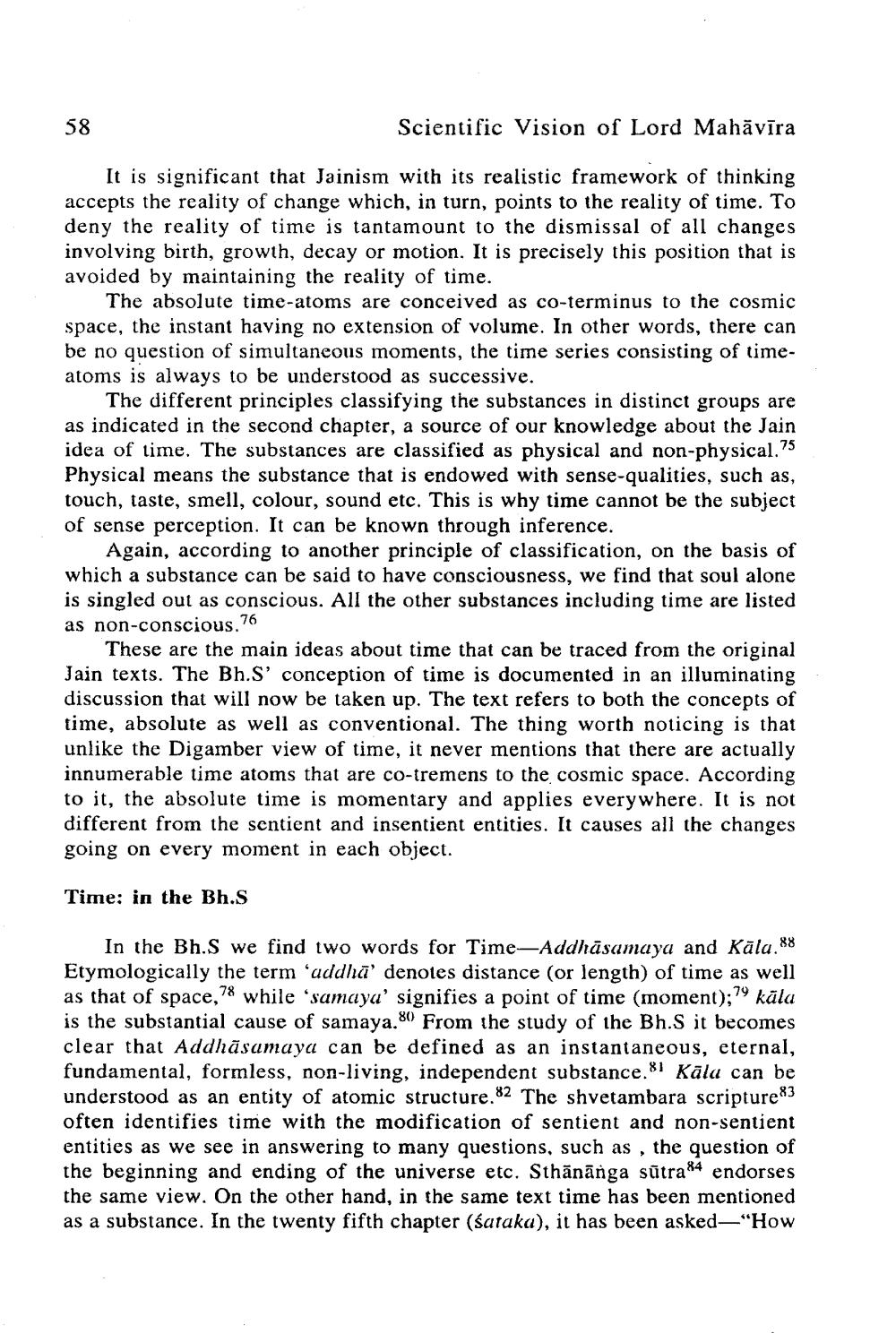________________
58
Scientific Vision of Lord Mahāvīra
It is significant that Jainism with its realistic framework of thinking accepts the reality of change which, in turn, points to the reality of time. To deny the reality of time is tantamount to the dismissal of all changes involving birth, growth, decay or motion. It is precisely this position that is avoided by maintaining the reality of time.
The absolute time-atoms are conceived as co-terminus to the cosmic space, the instant having no extension of volume. In other words, there can be no question of simultaneous moments, the time series consisting of timeatoms is always to be understood as successive.
The different principles classifying the substances in distinct groups are as indicated in the second chapter, a source of our knowledge about the Jain idea of time. The substances are classified as physical and non-physical.75 Physical means the substance that is endowed with sense-qualities, such as, touch, taste, smell, colour, sound etc. This is why time cannot be the subject of sense perception. It can be known through inference.
Again, according to another principle of classification, on the basis of which a substance can be said to have consciousness, we find that soul alone is singled out as conscious. All the other substances including time are listed as non-conscious.76
These are the main ideas about time that can be traced from the original Jain texts. The Bh.S' conception of time is documented in an illuminating discussion that will now be taken up. The text refers to both the concepts of time, absolute as well as conventional. The thing worth noticing is that unlike the Digamber view of time, it never mentions that there are actually innumerable time atoms that are co-tremens to the cosmic space. According to it, the absolute time is momentary and applies everywhere. It is not different from the sentient and insentient entities. It causes all the changes going on every moment in each object.
Time: in the Bh.S
In the Bh.S we find two words for Time-Addhāsamaya and Kāla.88 Etymologically the term 'addha' denotes distance (or length) of time as well as that of space, ,78 while 'samaya' signifies a point of time (moment);79 kāla is the substantial cause of samaya.80 From the study of the Bh.S it becomes clear that Addhasamaya can be defined as an instantaneous, eternal, fundamental, formless, non-living, independent substance.81 Kāla can be understood as an entity of atomic structure.82 The shvetambara scripture83 often identifies time with the modification of sentient and non-sentient entities as we see in answering to many questions, such as, the question of the beginning and ending of the universe etc. Sthānanga sūtra*4 endorses the same view. On the other hand, in the same text time has been mentioned as a substance. In the twenty fifth chapter (śataka), it has been asked-"How




